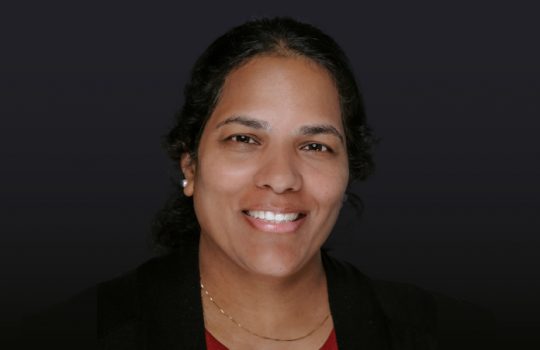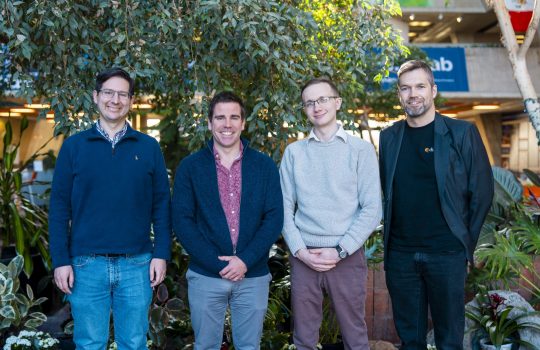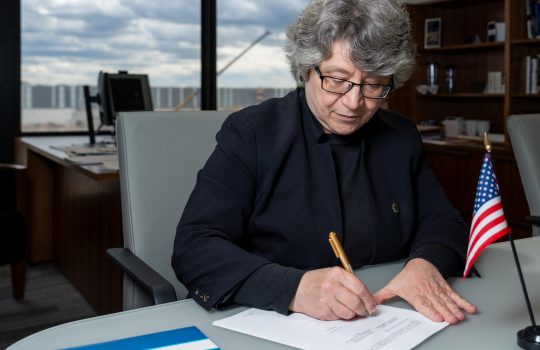NSF and DOE Office of Science join forces to support community cyberinfrastructure with $30 million in awards to empower scientific collaboration and computation.
BATAVIA, Illinois – Scientists on the track to discovery got good news this month when a powerful computing tool received critical government funding. A five-year, $30 million award to the Open Science Grid Consortium, announced by the National Science Foundation and the U.S. Department of Energy’s Office of Science, will operate and expand the Open Science Grid, a computing environment used by scientists to harness computing resources and scientific data from around the world.
Fermilab will receive $1.1 million each year, or $5.5 million over five years, to contribute across many of the activities of the OSG. Besides OSG Executive Director Ruth Pordes, OSG security officer Don Petravick, Gene Oleynik for storage deployments, and Ian Fisk, head of US CMS user facilities, will lead the contributions to the OSG effort.
“The OSG is an important part of the Computing Division’s strategy in support of global computing for the Fermilab scientific communities,” said Fermilab Computing Division head Vicky White.
The OSG will also play a critical role with Fermilab hosting USCMS, the US component of the Compact Muon Solenoid experiment collaboration, when the Large Hadron Collider begins operations at CERN, the European Particle Physics Laboratory in Geneva, Switzerland in 2007.
“USCMS is pleased with this means to sustain the US distributed infrastructure from which we will extract our science,” said Fermilab’s Lothar Bauerdick, head of software and computing for USCMS. “The Fermilab USCMS community is also playing a leadership role in the OSG as a core piece of its worldwide data analysis system.”
Michael Strayer, Director of the Scientific Discovery through Advanced Computing program and Associate Director for Advanced Scientific Computing Research in DOE’s Office of Science, noted that the ability to reliably share and analyze petabytes of data is critical to scientific discovery.
“This investment in sustaining and extending the Open Science Grid is an important component of the petascale science infrastructure,” said Strayer.
The OSG is built and operated by a unique partnership of universities, national laboratories, scientific collaborations and software developers that work together to create a common distributed computing environment, or grid, for scientific research. Computing resources from more than 50 sites in the United States, Asia and South America are shared through the OSG. These resources range from small clusters of ten computers to large facilities with thousands of processors and millions of gigabytes of data storage.
“The OSG has been operating since 2005 and has already had an impact on several areas of scientific research, from particle physics to biology,” said Joseph Dehmer, director of the NSF’s Division of Physics. “The NSF has partnered with the DOE’s Office of Science in support of the OSG’s efforts to empower scientific communities by providing them with effective and dependable access to an unprecedented distributed computing facility.”
Fifteen members of the OSG Consortium, including eleven U.S. universities and four national laboratories, will receive funding through the OSG award. Over the next five years, the consortium will reach out to more scientists and scientific collaborations, helping them to harness the power of grid computing for their research.
“OSG Consortium members contribute to and benefit from the OSG, making it a true community cyberinfrastructure,” says Fermilab’s Pordes. “Our computing services support diverse research groups, and developers of campus and regional grids – points of entry to the grid for university scientists and students – are beginning to use the OSG environment to provide access to their resources.”
Scientists from many fields, including astrophysics, bioinformatics, computer science, nanotechnology, nuclear science and particle physics, use the OSG infrastructure. The LIGO Scientific Collaboration will use the OSG to integrate its computing facilities and enable its search for gravitational waves. Two particle physics collaborations rely on the OSG to fully participate in experiments at the Large Hadron Collider in Geneva, Switzerland.
“The U.S. particle physicists participating in the ATLAS and CMS experiments at the LHC will depend on the OSG to connect them with the data when it starts flowing from CERN in 2008,” said Robin Staffin, Associate Director for High Energy Physics in the DOE’s Office of Science. “Scientists will use LHC data to address profound questions about the universe, such as the origin of mass and the nature of dark matter.”
Together with other grid computing projects, from computing grids on university campuses to large national and international grid projects, the consortium works to create a worldwide computing infrastructure for scientific research.
“Distributed computing and cyberinfrastructure have the capability to transform research, but these tools and methods remain challenging for most scientists,” says Miron Livny from the University of Wisconsin-Madison, OSG Facility Coordinator. “Efforts such as the OSG work to democratize computing by lowering the barrier to individual scientists using distributed computing facilities.”
Funding for the OSG from the DOE’s Office of Science will be provided through the second round of the Scientific Discovery through Advanced Computing program. Funding support from the National Science Foundation is provided by the Mathematical and Physical Sciences Directorate, the Office of Cyberinfrastructure and the Office of International Science and Engineering.
For more information please visit http://www.opensciencegrid.org/
List of institutions that will receive funding through the OSG award:
Boston University
Brookhaven National Laboratory
California Institute of Technology
Columbia University
Cornell University
Fermi National Accelerator Laboratory
Indiana University
Lawrence Berkeley National Laboratory
Stanford Linear Accelerator Center
University of California, San Diego
University of Chicago / Argonne National Laboratory
University of Florida
University of Iowa
University of North Carolina/Renaissance Computing Institute
University of Wisconsin-Madison



